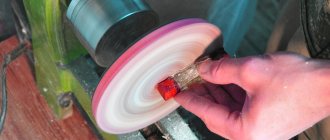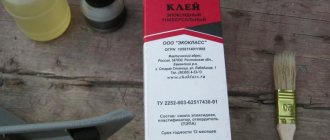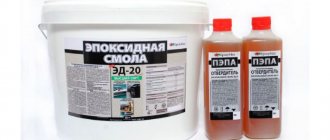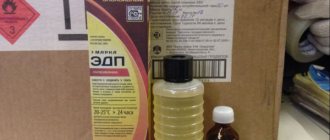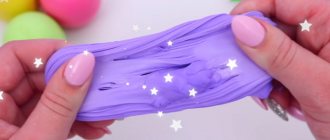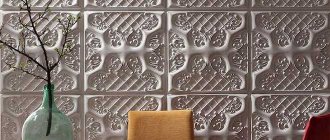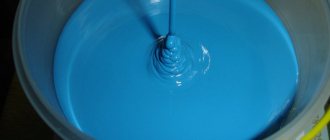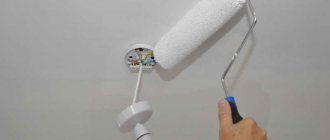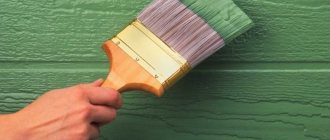Epoxy resin has found wide application in a variety of fields; it is used in construction, for repairs, for the manufacture of adhesive compositions, it can be used to create self-leveling floors, and recently it has gained particular popularity in the manufacture of various decorations. To make an epoxy product look more attractive, dyes for epoxy resin are used.
What are dyes used for?
Epoxy colorant is a special product that helps to obtain the necessary shades. The epoxy itself is usually transparent. But when they decide to use it as jewelry resin, most often it requires tinting. After all, using it for jewelry or other types of products involves bright colors.
In the creative process, the resin can be partially colored, then the effect of transitions into different colors is created, iridescence is created. There are many options for using dyes for resin; they are limited only by imagination.
It became clear why this material should be painted, but how to paint epoxy is not yet clear. This will be discussed in detail in the next chapter.
In the creative process, the resin can be partially colored, then the effect of transitions into different colors is created, iridescence is created.
Distinctive features
This material contains a resin (epoxy) and a specialized hardener. Additional components are pigment, plasticizer and silicon filler.
Other features of epoxy grout include:
- waterproof;
- stable, even shade;
- resistance to dirt and dust, resistance to alkali or acid;
- long period of operation (more than 50 years);
- use when facing ceramic, marble, porcelain stoneware and stone tiles;
- can be used for car wash, garage, swimming pool, workshop, laboratory;
- becomes an alternative to tile adhesive.
Types of dyes
Of course, it is more convenient to use special pigments intended for coloring this material; they are sold in retail outlets where goods for handicrafts and painting are sold; usually, dyes for resin are acrylic. Tinting is divided into the following types:
- One specific color, easy to find popular colors (white, brown, red, blue, black, turquoise, green and others);
- Fluorescent, special elements included in the composition allow painted objects to glow. Colored and colorless options are available;
- Tinted-matte, from which the product acquires a matte appearance, making it more elegant;
- Metallic, gives the product an iridescent finish;
- With glitter, it will add a nice shine to things.
The amount of paint applied allows you to give the product a different look. So, using one dye, but introducing different amounts of it, you get completely different objects. If you tint an object with a drop of the product, the color will turn out translucent. By increasing the quantity, you will get a more vivid effect. If you want to completely remove transparency and get a rich color, then first paint the surface with white paint.
The consumption of the tinting solution is not high; the maximum possible addition of pigment to the mixture is 5%. Mixing different colors with each other is allowed.
The amount of paint applied allows you to give the product a different look.
In addition to ready-made solutions, natural and available components can be used to paint epoxy. Suitable for this purpose:
- Ink from gel pen;
- Regular pen ink will also work;
- Ordinary oil and stained glass paints used for painting. Stain, nitro paint, alkyd paint (they are added before the hardener);
- Ink used for coloring polymer clay;
- Printer toner, activated carbon, they will replace black pigment;
- Talc, powder, chalk (it needs to be crushed), tooth powder;
- Brilliant green solution;
- Cosmetic shadows are also suitable, but mixing must be done carefully;
- Colored powder.
Dyes for polyester resin are different from those used for epoxy.
In addition to ready-made solutions, natural and available components can be used to paint epoxy.
Advantages
Epoxy paint for concrete floors is the best option due to the presence of qualities and properties that other materials do not have. These include:
- Wear resistance. The main reason why premises are treated with this type of lux is the increased strength of the covering film. The enamel penetrates deeply into the pores of the concrete screed, clogs them, and makes the surface resistant to all types of influences.
- Water resistance. Can be used as a waterproofing agent.
- No smell. Due to their water base and the absence of chemical solvents, epoxy paints dry quickly and are odorless. Therefore, unlike other lux lamps, they can be used for work in closed and/or poorly ventilated areas.
- High adhesion. Paints for concrete have the ability to firmly adhere to the base of any level. Most brands can be applied within three days from the moment the floor is poured. That is why moisture does not completely evaporate and remains in the structure of concrete. This makes it more elastic and reduces the risk of cracks.
- Resistance to UV rays. Such paints do not fade in direct sunlight.
- Moisture resistance. This enamel is used in rooms with high levels of humidity: auto repair shops, production shops, chemical laboratories, etc.
- Heat resistance. The temperature range for operating the layer is -40/+80 g.
- Decorative. Thanks to modern technologies, most manufacturers guarantee a glossy or matte layer as a result of application. Some brands contain so-called “chips” - special additives that make the surface smooth and shiny.
- Environmental friendliness. The absence of odor and toxic chemical reagents in the base allows the product to be used in institutions with a high level of safety requirements: clinics, hospitals, catering units.
How to choose the right proportions
It should be noted that there is a pigment and tinting paste. They create different colors. Tinting only changes color, and the pigment paste has the property of hiding. You need to take this into account when choosing a product. Powdered dyes must be finely ground. When working with them, they must be added before the hardener.
The proportion of adding dyes to the mixture is indicated by the manufacturers on the packaging, so it is preferable to choose special products. After all, the proportions of available means are difficult to establish.
But there are a few rules that will help in working with available coloring options:
- Oil, nitro paints, alkyd paints and varnishes can be added to the resin no more than 10%, otherwise they will make the mixture look like rubber;
- Other coloring elements can be added in an amount of no more than five to seven percent by weight of the epoxy;
- Do not allow water to get into the resin; it will spoil it.
The proportion of adding dyes to the mixture is indicated by the manufacturers on the packaging, so it is preferable to choose special products.
Kinds
Epoxy paints are divided into several types:
- two-component;
- aerosol;
- powder
Two-component paint is considered the most common in everyday use. In addition to industrial enterprises, it is often used at home. It consists of two components; before starting work, they must be thoroughly mixed.
It can also easily withstand exposure to aggressive environments, including atmospheric conditions. This paint has an excellent ability - it can clean itself. Any substrate will become much more scratch resistant after an aerosol coating, it will also give the surface a beautiful glossy look.
Powder paint is still more used in industry because it has fairly high characteristics. At home, it is used extremely rarely, because heating chambers are required to harden the coating.
Such dyes can be divided into two subtypes:
- Polyester. Such paints have maximum wear resistance and improve surface protection from friction.
- Epoxy-polyester. These coloring compositions have a fairly low price and low abrasion resistance properties, but they are quite resistant to ultraviolet radiation and high temperature.
Epoxy resin painting process
The work should be carried out at temperatures of 22-23 degrees above zero, such conditions will allow for high-quality painting and hardening will be successful.
The dyeing process must be carried out in compliance with safety rules; you must wear gloves and a respirator to prevent dangerous chemical elements from entering the respiratory tract. If resin gets on your skin, wash the area with soap and water.
Some mixtures contain a solvent; when working with them, it is necessary to ensure good ventilation in the room. The elements should be mixed in disposable containers, just as the dishes should be thrown away after work.
Work should be carried out at temperatures of 22-23 degrees above zero.
Required tools:
- Small spoon;
- Cup;
- Several syringes;
- Coloring agents;
- Forms where the resin will be poured.
Before tinting the epoxy resin, add a hardener according to the proportions indicated on the package. It is better to mix the ingredients in small portions; when the quantity is large, the mixture will become very hot, which will lead to deterioration of the resin. After it is poured into cups, separately for each required color, it is convenient to administer the composition with a syringe.
You need to immediately introduce the coloring element into the mixture, use a spoon to mix the components, the mixture should stand for 15 minutes in a water bath so that all air bubbles come out of it. And then pour it into molds. They should be closed to keep the material clean and prevent dust from getting on it.
If a transparent effect is required, then mixing is best done in a transparent container, then the resulting shade will be visible.
Before tinting the epoxy resin, add a hardener according to the proportions indicated on the package.
Kinds
Currently, offers from manufacturers of special epoxy resin dyes fully satisfy the needs of the market. Often, companies involved in the production of epoxy offer a set of accessories for the job, including paints with pigment pastes. Some of them are already on the list of popular brands, while some are just beginning to explore the market. However, the variety of brands of dyes does not allow us to fully describe each one, so it is more convenient to divide additives according to some characteristic or parameter. Pigment paste for epoxy resin can be made by different manufacturers, but the quality is most often about the same.
The first way to divide dyes into two types is to focus on transparency, that is, all colors are divided into transparent and opaque. Transparent are those dyes that color the resin, but do not cloud it, leaving the transmission capacity for rays of the corresponding color almost unchanged. After hardening, the resin looks like colored glass. Opaque dyes cause a characteristic haze and other effects that affect the transmission of light.
The following type of classification is considered more practical. It is this that is used by many buyers, as it helps to optimally select the desired composition. Any seller in a specialty store will tell you the brand of dye if the buyer requests one of its types.
- Single color dyes. The name speaks eloquently for itself. Currently, compositions have been developed to obtain almost any color and even shade, and colors such as blue, red, green and black were used in the initial stages of the development of applied creativity with epoxy.
- Dyes with phosphor. The phosphors are substances that produce photoluminescence, that is, glow under the influence of sunlight. The fluorescent component may be colored or colorless.
- Matte dyes not only impart color, but also add tiny suspensions to the composition, which form a characteristic scattering of light (matte). Typically, such dyes are used in the manufacture of jewelry and costume jewelry.
- Mother of pearl and metallic. It is very easy to distinguish such elements by their characteristic iridescence and tiny grains of metallic color. At the very beginning of the growing popularity of epoxy resin products, this effect was achieved by adding aluminum powder. Today there are several alternative methods, and paints of different pearlescent shades are sold.
- Glitter dyes are a separate category. They also give shimmer, but only sparkles - larger particles than those used in pearlescent dyes.
The artist operates with the amount of paint, since it is possible to obtain different shades and color depths. Even a small drop of dye can add a slight tint. Increasing the proportion of pigment will darken the color. To create rich colors, artists first add white paint to the epoxy, and then the one that carries the main shade.
Today, it’s easy to choose the right paint without even delving into the specifics of its characteristics. You can simply focus on the brand and select resin and dye from one manufacturer. The buyer receives a guarantee that all components fit together, and in the kit he will find detailed instructions on how to use them.
We paint with improvised means
The process of painting with improvised means is essentially no different from painting with special colors. The main thing here is the gradual introduction of the product to get the desired shade. After all, the exact proportions are unknown, unlike those prescribed in the instructions for special pigments. Complete hardening should occur in two days.
When using paints (alkyd, oil, nitro paints, etc.), you need to add them before the hardener.
When using paints (alkyd, oil, nitro paints, etc.), you need to add them before the hardener.
You can create various types of decorative items from epoxy resin; painting them in different colors will help give them a unique charm. You need to tint it carefully to get the desired shade; the variety of products presented makes it possible to realize any of the master’s ideas.
Temperature resistance
In this regard, it is also necessary to take into account the resistance of long-term and firmly hardened epoxy resin to thermal effects. The fact is that intensive processing of the surfaces of products made of epoxy resins (any kind, their initial price, quality and uniqueness do not matter) with abrasive and other materials causes a local, local increase in temperature at the point where the abrasive penetrates the surface of the product. The stronger the casting, the higher the temperature at the contact point. At the micro-area of contact, it can briefly, for a split second, rise to 200-300°C degrees.
Do not forget about the dust that is inevitable during grinding work. When processing large surfaces, it can accumulate up to a kilogram of sediment per working day, both at the workplace and in the most unexpected places in the room. So the way out is to put the nozzle from the switched-on vacuum cleaner on a special socket for grinding machines, which is necessarily provided in the latest generations of this tool.
Regular wet cleaning of the premises is also important. Epoxy dust can act as a very strong allergen, so do not neglect protective measures such as a face mask, safety glasses and a cap or headscarf to cover your hair.
The higher the strength of the cast product, the higher the abundance of dust and waste in the form of solid particles, and it depends on the type of hardeners used to start the polymerization processes. Moreover, it is known that for jewelry and costume jewelry the use of low-temperature hardeners such as PEPA is unacceptable. They will not allow you to obtain not only a completely transparent, but also a colorless layer.
TETA or its analogues in terms of chemical structure and curing principle are used, and they have one feature that makes it possible to make high-strength castings: after 24 hours from the start of polymerization, the product is placed in an oven, furnace or other device for 2-3 hours, where the temperature is maintained at 80°C degrees. This increases the hardness of the finished, completely cured epoxy material in units of MPa or kgf/mm, measured on the Brynner, Vickers or Rockwell scales.
In turn, the harder the resulting casting and the more external defects it has that can be removed by grinding and polishing, the higher the boundary layer temperature during processing.
Site catalog assortment
Our website catalog offers a wide range of epoxy resin colors. The saturation of the resulting substance will be directly related to the selected proportion (that is, it will depend on the amount of chemical dye added). The dyes offered by our store are non-toxic and dielectric.
It makes sense to buy resin dyes in our store because we:
- We offer certified products;
- we sell dyes whose color does not fade or fade over time;
- we sell fillers that do not cause corrosion;
- we set reasonable prices that make our products accessible to a wide category of consumers;
- We periodically arrange promotions and give customers discounts, thanks to which you can always save money on the purchase of our products.
